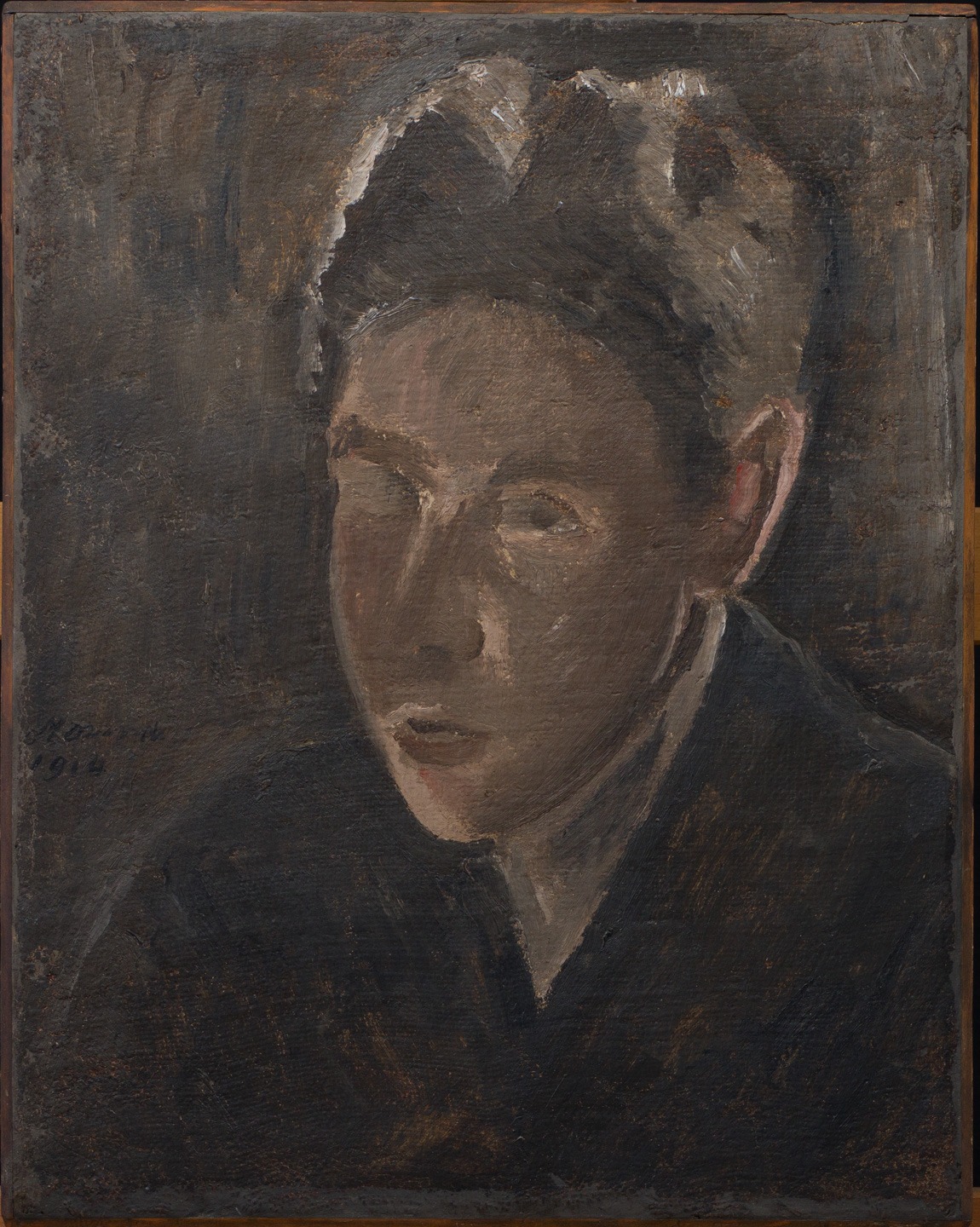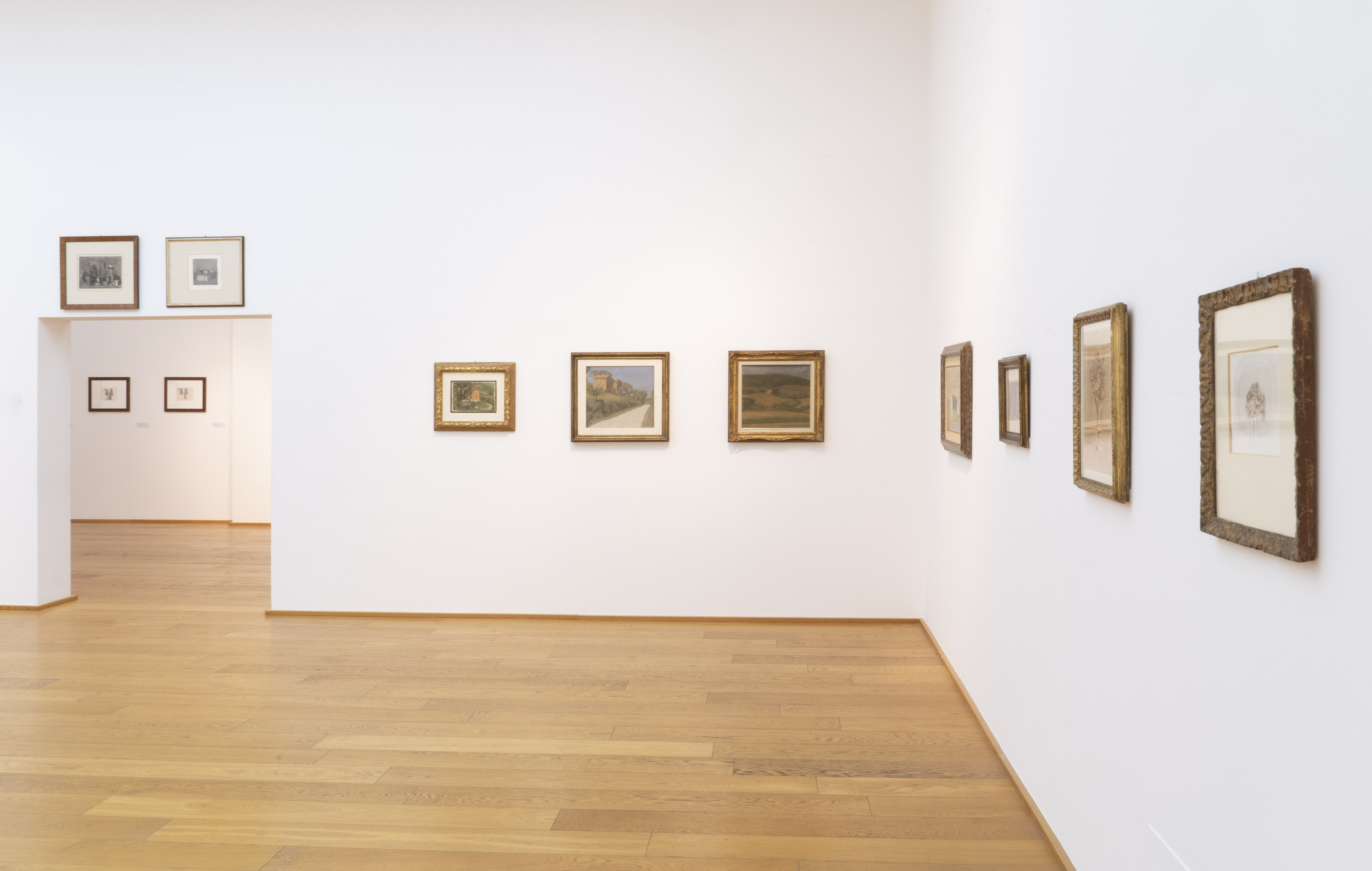George Morandi. Works from the Antonio and Matilde Catanese collection, View of the exhibition at the Morandi Museum | Photo: © Ornella De Carlo | Courtesy of the Bologna Civic Museums Sector | Morandi Museum
And then a parade of flowers and still lifes created between 1918 and 1959, interesting for tracing the development of the research of the refined master of vases, bowls and bottles.
And again the landscapes, like The white road painted in Grizzana and revived in some variations in 1939 and 1941.
These are just some of the 27 works from the private collection of Antonio and Matilde Catanese, ready to be shown to visitors to the Morandi Museum in Bologna from 3 December to 26 February on the occasion of the exhibition George Morandi. Works from the Antonio and Matilde Catanese collection.
Starting in the 1960s, the passionate spouses began to buy the first Morandis, demonstrating their refined and far-sighted taste in a city like Milan, which played a fundamental role in the world of art and collecting in the twentieth century. An attitude, that of the Catanese spouses towards the production of Giorgio Morandi, well described by Antonio in some passages of the interview granted to the curator of the exhibition Mariella Gnani.

Giorgio Morandi, Self-Portrait, 1914, Oil on canvas, 35 x 44 cm, Antonio and Matilde Catanese Collection © Giorgio Morandi by SIAE, 2022
“When faced with a work by Morandi – confesses Catanese – I feel like an active subject, not a passive one, as it doesn’t happen to me for other authors, albeit important ones, that I have chosen and with whom I surround myself. But with Morandi it’s different. His painting forces me to observe the subject for a long time. With each reflection on the brushstroke, on the slight variation of color, on the perceived dust, I feel that I have to stay longer, return with my thoughts to grasp more”.
The exhibition at the Morandi Museum stems from the desire of the Catanese family to share part of their collection with the public and from the desire of the children to express their gratitude to their parents for having had the opportunity to refine their sensitivity in contact with similar masterpieces .
Thus walking in this “exemplary microcosm for deciphering and understanding Morandi’s activity”, as the art historian Maria Cristina Bandera defines the Catanese collection, it is possible to retrace the entire activity of the Bolognese master, the techniques and the themes dealt with by artist, appreciating the undoubted relevance of the pieces that are part of it. Starting with the rare Self-portrait youth of 1914, a work of primary importance, formerly in the Valdameri collection, the public will pass through still lifes, flowers and landscapes that allow them to follow the development of the master’s research who knew how to preserve the realistic rendering of his subjects despite the almost Cezannian simplification of their forms.

George Morandi. Works from the Antonio and Matilde Catanese collection, View of the exhibition at the Morandi Museum | Photo: © Ornella De Carlo | Courtesy of the Bologna Civic Museums Sector | Morandi Museum
Among the ten works – oils, watercolors and etchings – which favor the theme of flowers so dear to Morandi, a watercolor from 1918 stands out, an example of rare mastery which bears witness to an already fully acquired technical ability. Many of the works on display also boast an illustrious collecting history, such as the Landscape from 1941 passed from the important collection of Pietro Feroldi to that of Gianni Mattioli and later landed in that of the Plaza spouses; and again i Flowers from the Jucker collection, or even the Still life from 1940 already in the Rockefeller collection.
“I paint and engrave countries and still lifes” Morandi wrote about etchings, a technique that he masterfully mastered as a self-taught and which he always considered as a parallel language to painting. The exhibition will be accompanied by a publication published by Silvana Editoriale, with critical texts by Mariella Gnani, Maria Cristina Bandera, Luca Cecchetto, Federica Bucolini, Paolo Triolo, Sabrina Burattini, Laura Valentini, and the cards of the 90 works belonging to the Catanese collection by Stella Seitun.
The exhibition can be visited on Tuesday and Wednesday from 2 to 7 pm, Thursday from 2 to 8 pm, Friday, Saturday, Sunday and public holidays from 10 to 7 pm.

